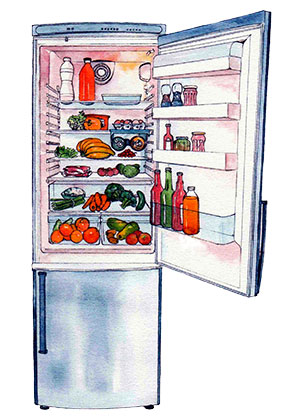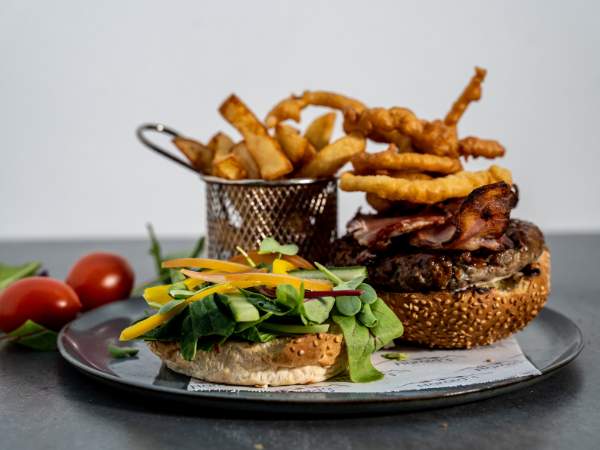News
This simple fridge layout will keep your food fresh for longer
Tuesday, January 24th, 2017Food going bad before its sell-by date? It might be time to rearrange your fridge. Here’s where you should be keeping what.

Illustration by Adrian Owen.
The top shelves
As this part of the fridge has the most consistent temperature, it’s good for food that doesn’t need to be cooked, like leftovers, as well as food that’s ready to eat, such as cold meats and dairy-free dips.
The low shelves
These shelves are the coldest part of the fridge, so are good for eggs and dairy (keeping your milk bottle in the door can make it go off more quickly) and meat (keep it on the lowest shelf to prevent meat juices from dripping onto other items in your fridge).
The doors
This is the warmest part of the fridge, as it’s most exposed to temperature fluctuations when it’s opened and closed. Ignore those egg holders in the doors – you want to keep your eggs in the coldest part of the fridge to keep their temperature constant. Foods that do well here include pickles, condiments, cooldrinks, juices and water.
The crisper drawers
Most modern fridges have two crisper drawers, a high-humidity and a low-humidity drawer – look at the sliding vents on each drawer. Some fruit and vegetables produce a gas called ethylene as they ripen, while others are sensitive to ethylene and ripen further in its presence. It’s crucial to store them separately. Ethylene-producing fruit and vegetables – apples, apricots, kiwi fruit, papayas, pears and peaches – should be stored in the low-humidity drawer (the one with the vent fully open), which allows the ethylene to escape, preventing the food from rotting. Use the high-humidity drawer (the one whose vent is closed or doesn’t have a control) to store things such as asparagus, cucumber, lettuce and cauliflower. More moisture means the food will stay fresher for longer.
Foods that don’t do well in the fridge
Fresh basil is best kept at room temperature, because it produces ethylene gas, which degrades green leaves in a confined space. Plus, it looks great in a jar of water on your windowsill. Storing avocados in the fridge will prevent them from ripening and make them turn black. Store at room temperature until they ripen, then keep in the fridge to stop the ripening process if you’re not going to eat them immediately. Bananas turn brown in the fridge, because they contain an enzyme that causes browning and cell damage, which is activated at lower temperatures. Lastly, tomatoes. Refrigerating them disrupts the natural reaction that produces their flavour. Rather keep them in a pretty bowl on your counter.












